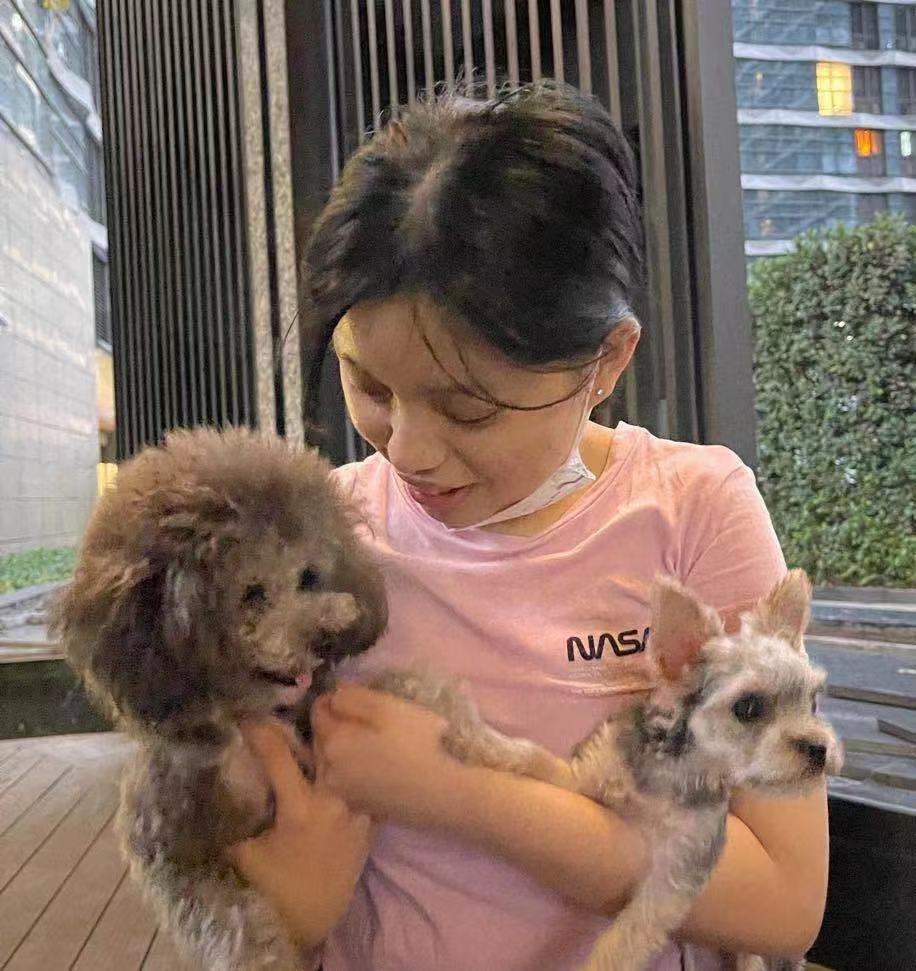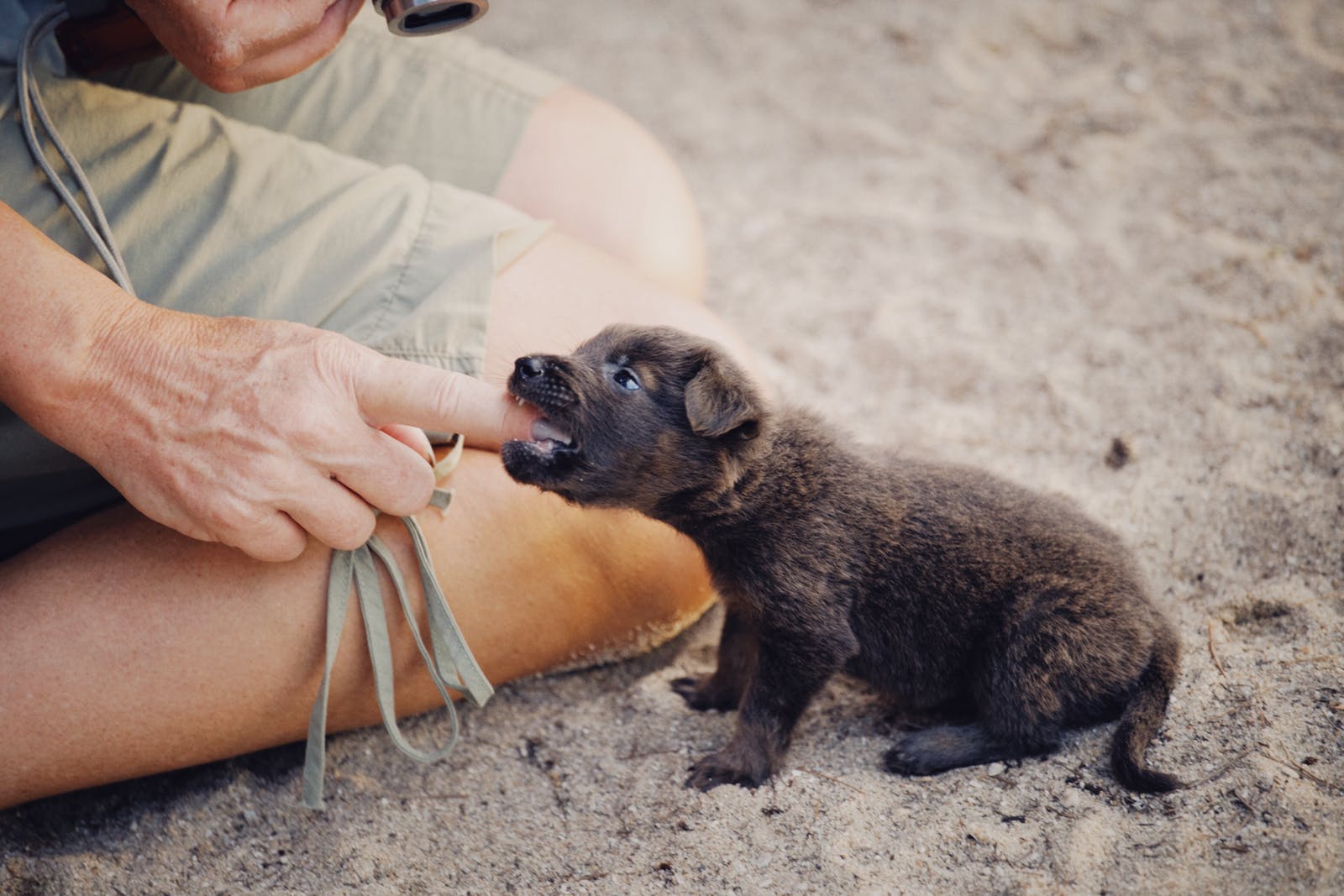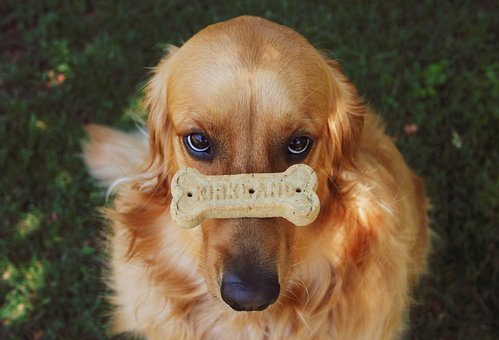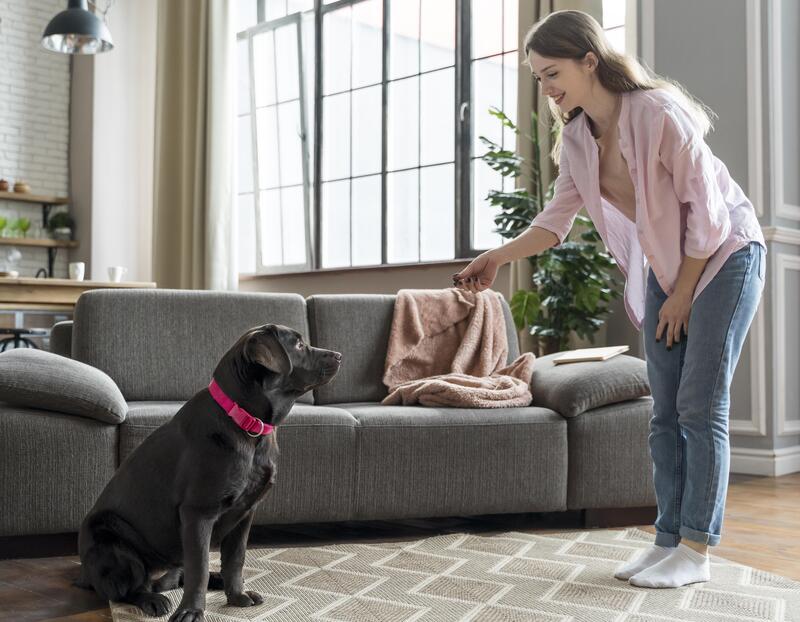
The term “service dog” is typically associated with a lot of work, effort, training, and maintaining progress, rights, and public access. If you are considering turning your dog into a service dog, you should get informed about the possible ways to get one or turn your own pet dog into a service animal. In the second case, you will be the person responsible for raising and training the dog, which will start in your home.
Training your pet dog as a service dog will require some sort of adjustments on your side, and will require you to show certain qualities such as patience, persistence, willingness to learn, and enhance your skills as a handler. Some owners decide that it would be better to receive help from professional trainers or organizations and let them take care of their dogs' training or at least parts of the training process, i.e. there are boarding schools and different group and individual programs. However, whether you will rely on professionals for some tasks or not, you will be actively engaged in the training process that will start at home.
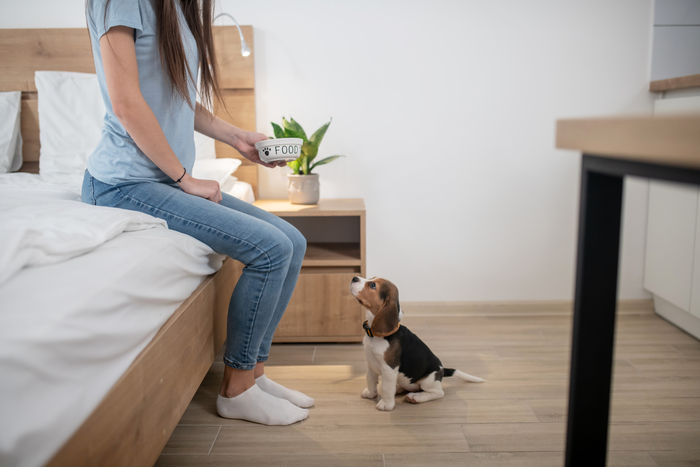
Make Sure That Your Dog Has the Right Temperament for the Job
The so-called “puppy testing” is commonly used as a reliable way to determine whether a pup is suitable for the job as a service dog or not. Puppy testing includes several types of tests, whose purpose is to determine whether a dog is people-oriented, calm, eager to investigate, and can tolerate some reasonable amount of pressure or is rather reactive, anxious, and fearful. We believe that if not all, then at least most behavioral issues can be addressed if handlers are disciplined, patient, and consistent. However, it is a fact, that some dogs just have more suitable temperaments for this job than others.
We need to clearly see our paw friends with all their strengths and weaknesses and determine if training them as service dogs would be the right thing to do. Also, we need to be ready to engage in this sort of training. We will list below several tips on how to determine whether your pup has the potential to become a service dog or not:
The Attraction Test
The more interested a pup is in you, the greater the potential for a service dog is. For instance, you can sit on the floor and clap with your hands. If your dog comes to see what is happening and seems to be interested in you then they are likely to be people-oriented.
The sound Sensitivity Test
You can use an object producing a distinctive ( and loud) sound to see how your pup would react to it. If your dog gets scared and even hides, then they may not be the right dog for the job. However, if your paw friend gets scared for a moment, but then puts themselves together and goes exploring, then they might have a potential for the job.
The touch sensitivity test- it is very suitable for people who intend to raise a child/children and a dog. You can gently squeeze the webbing between their toes and continue doing it until you have a response from your pup. Be careful and do not apply too much pressure.
The idea of this test is to prove what amount of pressure your dog can take. This is important if your paw friend will interact with children or in case you will have multiple pets. Sometimes it takes time for them to get accustomed to each other. If your pup seems to easily forgive you and continue seeking attention is a good service dog candidate.
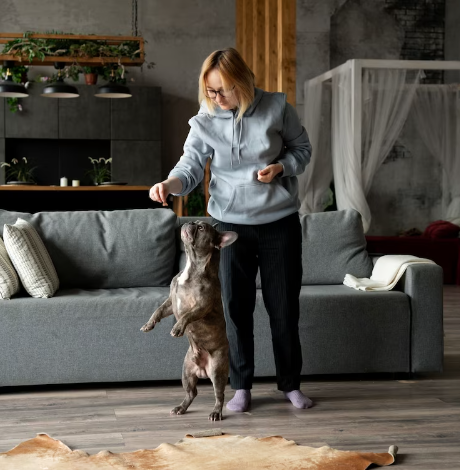
Service Dog Training at Home - Stages
Puppy Training
Based on your dog’s age, you may need to start with the very basics, such as potty training, crate training, and addressing behaviors like chewing and nipping. If your dog is still a puppy, the following articles might be helpful to you: “When to Start Puppy Training and How to Conduct It?”, “Puppy Training: Everything You Want To Know Before You Start”, “Puppy Basic Obedience 101”. They will provide you with information on different aspects of puppy training, what to know before you start it, and what factors you need to consider during the training.
Basic Obedience
Once your doggy already knows the fundamentals, you can move to basic obedience training. As we have mentioned several times, knowing commands such as “sit”, “stay”, “come”, calmly waking on a leash, “heel”, and “down” is essential for service dogs. They need to learn to behave appropriately first before they get trained in advanced service dog tasks. Basic obedience is not fulfilling certain commands though, but learning the general concept of training, namely “I will receive a reward if I can do the right thing”.
Since in this article, we are talking about service dog training at home, this especially refers to basic obedience tasks. Basic obedience training starts at home basically at the moment your new paw partner comes into your home. Important components of this type of training are your dog’s favorite treats and a clicker. Although most dogs are very food-oriented, you should keep in mind that this does not apply to all of them. You may need to adjust the treats provided, so they suit your dog’s preferences or put the emphasis on praising, petting, and providing toys...in case that food does not work. Clicker training, on the other hand, is not a prerequisite for basic obedience or more advanced training to be conducted. It has advantages though, namely, it is very easy to use, and useful for training dogs in new behaviors, as they quickly pair clicks with treats.
You can apply two main techniques to train your dog in basic obedience:
1. Waiting for your dog to show a type of behavior on their own and reinforce it, i.e. wait for the dog to sit, and the moment they touch the ground, you should click with a clicker and reward them. Since the idea of this technique is to “capture” a behavior while the dog exhibits it, it is called a “capturing method”;
2. Encouraging the dog to show a certain behavior or even to “lure” them to do it, i.e. if you want to train a dog to sit, hold a treat in your hand and move it above the dog’s head. Your paw friend may end up in a sitting position, as they are not likely to want to lose the treat out of sight.
Service Dog Tasks
Advanced training should start when you are confident in your dog’s good manners. These tasks are a sort of build-up upon the already learned ones, and you can adapt them depending on your needs as a service dog user. In case you will be engaged in the training process, but the tasks won’t be for your benefit, you will be considered the dog handler, and the person who benefits from those tasks will be the user.
You can train your paw friend in so many service dog tasks at home! Some of the easier ones are listed in the second part of our article: “Easy and Fun Dog Tricks to Train and Bond With Your Dog”, called “Useful Tasks”. You will find information on how to conduct training for the following commands: “Give a Kiss”, “Nose-Nudge”, “Take It + Bring It”, “Speak” (barking on command), and teaching a dog their name, also known as “recall”. "Recall" is rather a part of basic obedience training, and not of service dog training, but it is something your dog will have to know in any case.
Service dog tasks can be beneficial for both the physical and/or mental health of a person. Some common service dog tasks are:
- Guiding tasks;
- Mobility-related tasks such as balance tasks;
- Retrieving tasks;
- Alerting tasks;
- Environmental tasks i.e.: opening/closing doors, and cabinets, turning lights on/off;
- Psychiatric service dog tasks, e.g. Deep Pressure Therapy and tactile stimulation;
- Detecting allergens;
- Interrupting repetitive behaviors.
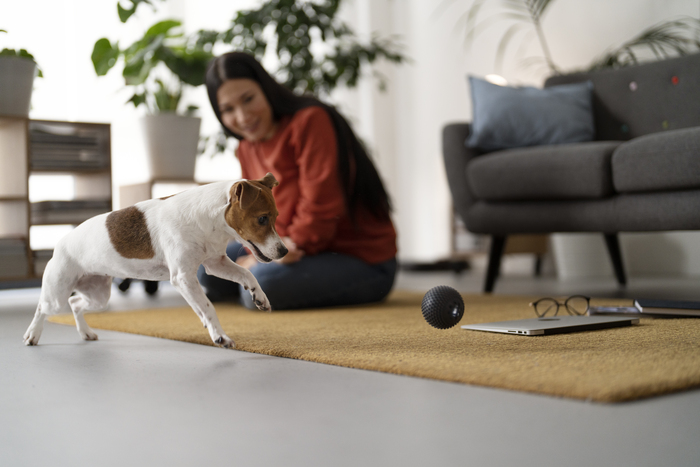
Things You Should Consider While Conducting Training at Home
Value of the Given Treats
For training a dog in new behaviors you may need to use high-value treats such as small pieces of chicken, lamb, turkey, or string cheese. Give these if your dog’s performance is excellent, if you train them in new behavior, or if there are many distractions in the environment.
Amount of the Given Treats
You should make the treats into small pieces and reward your dog when they show the wanted behavior. Do not overfeed your dog and do not give them treats at random. Let them feel that they have earned the reward for displaying the wanted behavior!
Timing
Proper timing is of utmost importance for the success of the training process. By “good timing” we mean the moment you reward your dog or click with a clicker and then reward them. This is essential for the dog to understand why exactly they receive a reward. If you click and reward your dog too early or too late, they won’t understand the concept and what behavior you are trying to reinforce.
Duration of the Training Sessions
Training longer than usual to make up for missed training sessions is not a good option. Your dog might get tired, overwhelmed, and worse- bored. And you do not want your canine to pair the training process with an unpleasant experience and boredom. Keep the sessions within 10 minutes and practice as frequently as possible.
Socialization
Socializing your paw friend, especially during the first year of their life is very important for their skills as a service animal in the future. You should consider the intensity of the socialization.
You may feel tempted to rush the process and meet your pup with other dogs or people. This could cause your pup to feel overwhelmed, overly excited, or stressed. Try socializing your future service dog at home first (with your family members), then gradually start meeting them with other dogs (vaccinated and well-mannered).
Distractions
These are important aspects of the training process both at home and in public, that many owners struggle with. Distractions should be added step by step and training should always start in an environment free of distractions.
You have to pick a quiet room, where are no distracting items like a TV, or a radio, nor should your dog’s supplies such as a food and water bowl be there. Take small steps and if your dog seems to struggle with some commands, stop the session, wait a few minutes, and start again. Once your paw friend fulfills the given command consistently, you can move to a busier room, then to your backyard...and gradually start practicing in public places.
Do Not Repeat Yourself
This is another tricky aspect of the training process. The natural response of many owners to situations where their dogs do not fulfill the given task immediately is to repeat the command or even give the command several times. You should avoid doing this. If your dog hesitates to fulfill the command wait for a minute and try again. This could mean that you should practice more and reduce the intensity of distractions.
Keep the Commands Short and Clear
Do not expect your dog to understand long sentences including various words for a single command. Once you choose a cue word, that will be paired with a certain behavior, stick to it and do not change it during the process. Yes, some dogs are very intelligent and can even understand commands in different languages. However, this does not mean that you should make the training challenging from the very beginning.
Pace
Adjust the training pace to your dog’s personality and temperament. If your canine seems to quickly understand what you want them to do, you can accelerate the process and vice versa- if they have difficulties with certain commands, keep it simpler and slower.
Do Not Rush the Process
This is directly connected with the point above-consider the pace at that your paw friend learns new things. Do not rush the process and take small but frequent steps.
We wish you luck with the training!

